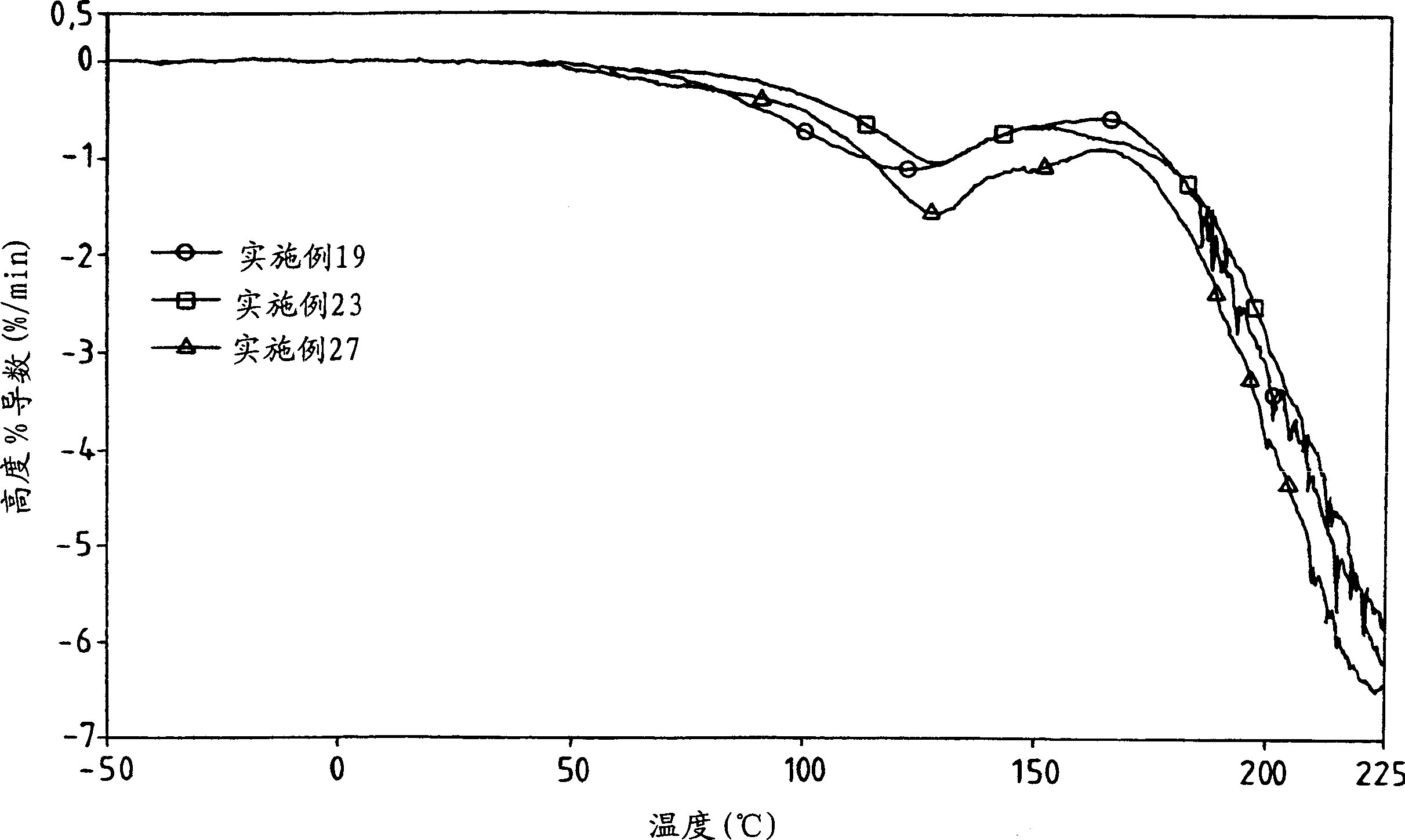Polyurethane foaming plastic with improved heat flexibility and production thereof
A foamed plastics, polyurethane technology, applied in the field of polyurethane foamed plastics, can solve problems such as not mentioned
- Summary
- Abstract
- Description
- Claims
- Application Information
AI Technical Summary
Problems solved by technology
Method used
Image
Examples
Embodiment 1-9
[0143] An isocyanate-reactive composition was prepared consisting of the materials listed in Table 1, the amounts of which are expressed in parts by weight. These isocyanate reactive components were then reacted with ISOCYANATE B in an amount such that the isocyanate index was 110 using Cannon HE-120 RIM equipment. The reaction mixture was added to an aluminum plate mold heated at 60-77°C. The properties of the moldings are shown in Table 2.
[0144] Material
[0145] determination
[0146] These examples illustrate the simple addition, without modification, of blown soybean oil to a polyurethane-making reaction mixture treated by the RIM process, which confers no appreciable benefit on the physical properties of the polyurethane foam, However, it does not adversely affect the physical properties of the foam. Since the system is more expensive by excluding the more expensive materials in the isocyanate-reactive components, there is no savings in the cost...
Embodiment 10-18
[0148] An isocyanate-reactive composition was prepared consisting of the materials listed in Table 3, the amounts of which are expressed in parts by weight. Then, using Cannon HE-120 RIM equipment, these isocyanate-reactive components were reacted with ISOCYANATE B, and the amount of ISOCYANATE B was used to make the isocyanate index 110. The reaction mixture was added to an aluminum plate mold. The properties of the moldings are shown in Table 4.
[0149] Material
[0150] determination
[0151] These examples illustrate systems employing varying amounts of blown soybean oil to replace a portion of the more expensive polyols in the polyurethane-making reaction mixture. As can be seen from these tables, the physical properties of the polyurethane foam are not adversely affected when blown soybean oil is substituted for up to about 30% by weight of the polyol. Since there is no detrimental effect on the physical properties of the foam when an inexpensive ...
Embodiment 19-30
[0153] An isocyanate-reactive composition was prepared consisting of the materials listed in Table 5, the amounts of which are expressed in parts by weight. Then use Cannon HE-120 RIM equipment to make these isocyanate-reactive components react with ISOCYANATE A. The amount of ISOCYANATE A makes the isocyanate index 110. The reaction mixture was added to an aluminum plate mold. The properties of the moldings are shown in Table 6.
[0154] Material
PD
PE
SF
PU
CB
PA
LA
CA
BA
Example 19
55
45
3
6
0.2
--
3
4
0.7
Example 20
55
45
3
6
0.2
--
3
4
0.7
Example 21
55
45
3
6
0.2
--
3
4
0.7
Example 22
55
45
3
6
0.2
--
3
4
0.7
Example 23
55
33
3
6
0.2
12
3
4
0.7
Example 24
55 ...
PUM
 Login to View More
Login to View More Abstract
Description
Claims
Application Information
 Login to View More
Login to View More - R&D
- Intellectual Property
- Life Sciences
- Materials
- Tech Scout
- Unparalleled Data Quality
- Higher Quality Content
- 60% Fewer Hallucinations
Browse by: Latest US Patents, China's latest patents, Technical Efficacy Thesaurus, Application Domain, Technology Topic, Popular Technical Reports.
© 2025 PatSnap. All rights reserved.Legal|Privacy policy|Modern Slavery Act Transparency Statement|Sitemap|About US| Contact US: help@patsnap.com



